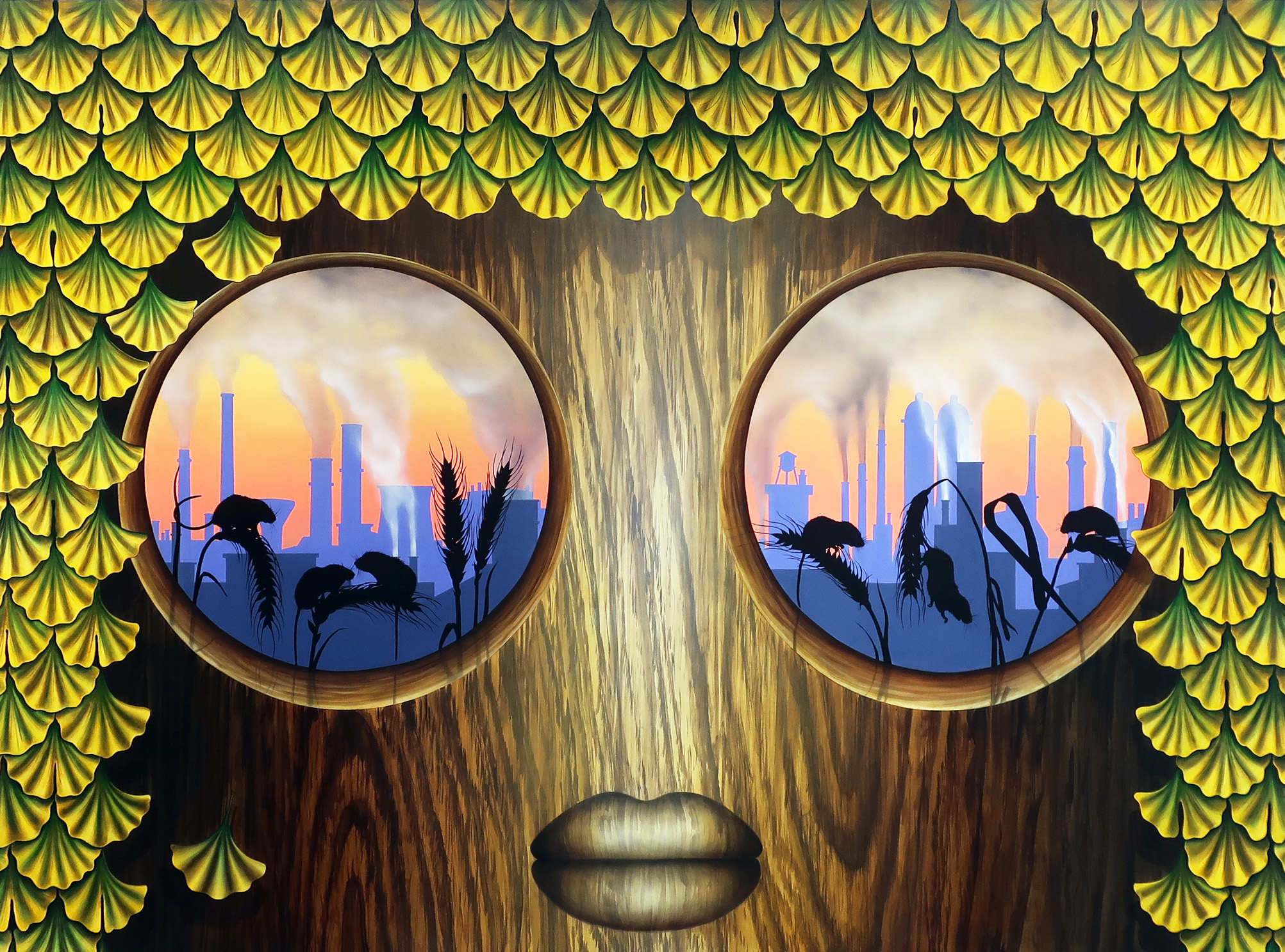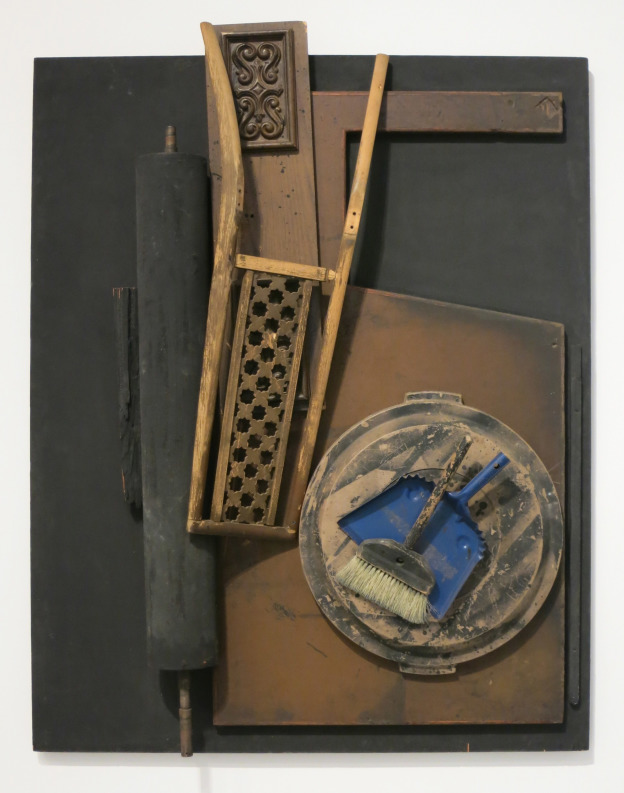Inspired by the manically busy brooms in Disney’s Fantasia, Emily Mae Smith’s recurring broom character is set apart – an individual posing with tense self-assurance in several of the artist’s new works now on view at Petzel Gallery. Initially, Smith saw the brooms as representative of unrecognized female labor; separated from the pack, they become lone underdogs constructed from the discards of wheat production but forming identities of their own. This figure is host to two mice on her legs and birds and a squirrel on her head, offering sanctuary and even enduring abuse as part of her relationship to nature. (On view through Nov 12th).


